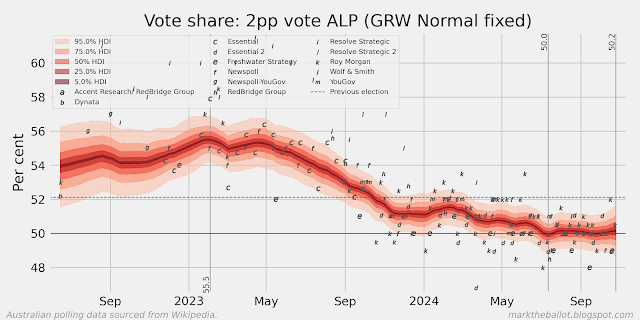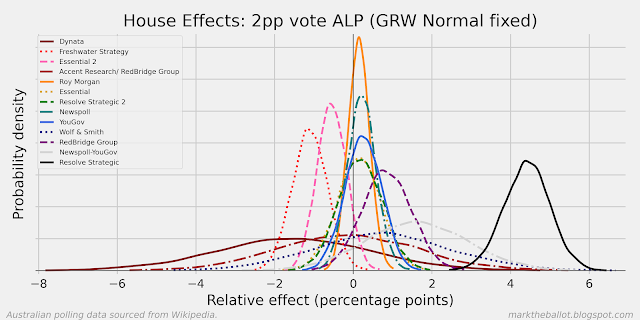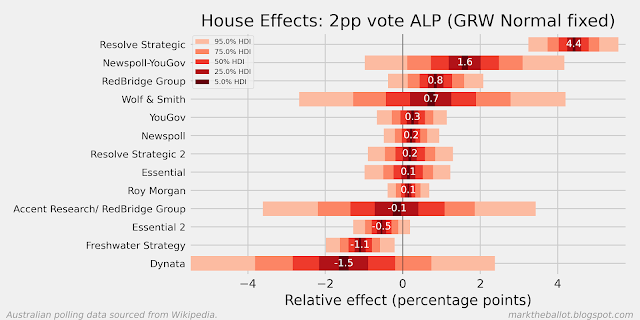Before I begin, let me tell you a sad story. I went overseas for an extended period, and while I was away, the code I use to daily scrape the SportsBet website stopped working. So, I have a roughly six-week gap in the betting market data. In this time, the odds of a Labor victory have lengthened (with Labor still the favourite to form government after the next election). The betting market has the outcome of the next election pretty close to even money (reflecting the polls below). What has changed is the odds for any other result (which I ignore in the following charts). Those odds have shorted from \$101 to \$81.
Turning to the opinion polls, we now have an extended period of some four or so months where the projected two-party preferred outcome is very close to 50-50 - the proverbial toss-up.
At this point, I should note the way in which I model house effects has changed. For those pollsters that have changed their polling methodology (Essential and Resolve), I exclude the polls conducted under the earlier methodology from the requirement that all house effects sum to zero across the pollsters. I also exclude from the sum-to-zero constraint those pollsters that have fewer than five polls published over this period. For the record, the pollsters included in the sum to zero constraint above were: 'Newspoll', 'Resolve Strategic 2', 'Freshwater Strategy', 'Essential 2', 'Roy Morgan', 'YouGov', and 'RedBridge Group'. The estimated house effects for each pollster are as follows (note: these two charts are different ways of reporting exactly the same data).
Turning to the primary votes, some trends are clear. Labor's primary vote is down on the previous election and the Coalition's primary vote is up. The vote share for independents and other parties is down on the previous election. The vote share for the Greens is above where it was at the previous election. I suspect this reflects some movement from the "Teals" back to the Coalition, and some movement of votes from Labor to the Greens. On these numbers, you would expect whichever major party forms government, they will rely on the support of others for the passage of legislation (yes, the polls suggest a hung parliament).
The data for these charts was sourced from Wikipedia.















No comments:
Post a Comment